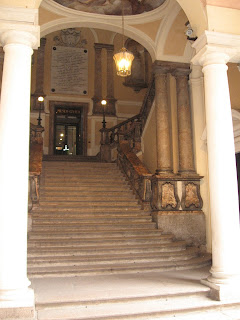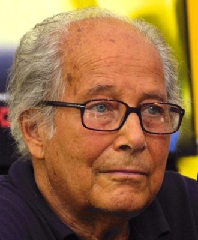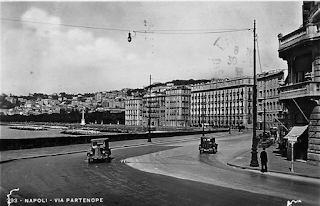Christian Democrat founder was jailed by Mussolini
 |
| Alcide De Gasperi |
An opponent of Benito Mussolini who survived being locked up by the Fascist dictator, he was the head of eight consecutive governments between 1945 and 1953, a record for longevity in post-War Italian politics.
Although Silvio Berlusconi has spent more time in office - nine years and 53 days compared with De Gasperi's seven years and 238 days - the media tycoon's time in power was fragmented, whereas De Gasperi served continuously until his resignation in 1953.
As prime minister, De Gasperi was largely responsible for Italy's post-War economic salvation and for helping to hold the line between East and West as the Soviet Union established its border on Italy's doorstep.
During his premiership, Italy became a republic, signed a peace treaty with the Allies, joined the North Atlantic Treaty Organization (NATO) and became an ally of the United States, who in turn provided considerable help in reviving the shattered Italian economy.
De Gasperi took advantage of America's nervousness about the rise of the Soviet-funded Italian Communist Party, negotiating a peace treaty much more favourable to Italy than might have been expected and securing immediate financial help towards rebuilding Italy's damaged infrastructure. In return he promised to mobilise opposition to the Communists.
America then supported De Gasperi's Christian Democrats in the crucial 1948 election not only through financial contributions, some above board but others less so, but also through propaganda, with Italian-Americans encouraged to urge their relatives at home to vote against the Communists.
 |
| The tomb of Alcide de Gasperi in the Basilica di San Lorenzo fuori le Mura (Photo: Panairjdde CC BY-SA 3.0) |
The Christian Democrat Party was formed after the fall of Benito Mussolini's Fascists, with De Gasperi the driving force.
Born in Pieve Tesino, a town in the South Tyrol area of Trentino-Alto Adige today but then part of the Austria-Hungary, he was a member of the Austrian parliament for six years before his home region became part of Italy under the terms of the settlement following World War I.
Continuing his political career, he was among the founders of the Italian People's Party (PPI) in 1919 and served as a deputy in the Italian parliament between 1921 and 1924, the period that coincided with the rise of Fascism.
At first, De Gasperi was keen for the PPI to be part of Mussolini's first government but this support wavered as the Fascists began to introduce major constitutional changes and attempted to subdue their opponents with violence and intimidation.
When the socialist politician, Giacomo Matteoti, who had spoken out against the violence, was murdered, De Gasperi himself began to campaign against the Fascists. In 1927 he was arrested and sentenced to four years in jail.
In poor health, he was released after 18 months following an appeal from the Catholic Church. In serious financial difficulties, he found work as a cataloguer in the Vatican Library and remained there for 14 years.
For most of this time, he kept a low profile, but after Mussolini's grip on power began to loosen, he resumed his political activity by forming another party, Democrazia Christiana, drawing on the ideology of the PPI, and publishing his Ideas for Reconstruction, after which he was appointed the party's first general secretary.
De Gasperi died in 1954, a year after he resigned as prime minister following his party's failure to secure a majority in the 1953 elections and only two months after stepping down as leader. He had returned to Trentino but political office in Italy at the time did not bring significant financial reward and it is said that he died with not enough money even to pay for a dignified burial.
Fortunately, the Italian government felt his achievements deserved to be recognised with a state funeral. His remains are buried at the Basilica di San Lorenzo fuori le Mura in Rome.
 |
| The Fountain of Neptune in Piazza Duomo in Trento (Pic: Matteo Ianeselli CC BY-SA 4.0) |
Trentino-Alto Adige is a region bordering Switzerland and Austria that includes part of the Dolomites, a section of the Italian Alps notable for its sawtooth limestone peaks. Trento, the region's capital, has some notable Renaissance palaces and the region as a whole is dotted with medieval castles.
Travel tip:
The Basilica di San Lorenzo fuori le Mura can be found in Piazzale San Lorenzo, close to the University of Rome and accessible by following the Via Tiburtina to the north-west of the main Roma Termini railway station. There are bus services along the route. The Basilica suffered bomb damage during World War II and had to be rebuilt. The original was constructed in the fourth century, was rebuilt 200 years later and added to at various times subsequently.
Home
















